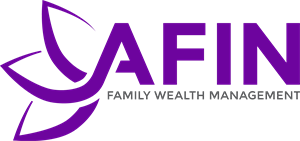
Premium Financing
INTRODUCTION
Premium financed life insurance is a unique tool in the world of financial planning. It often offers numerous benefits, especially for high-net-worth individuals. When properly structured and managed, life insurance can provide a tax-free build-up of cash value which, in time, can be used to create tax advantages such as estate tax exemptions or income in retirement. The tax-free nature of the death benefit can provide a cash injection to help alleviate the financial burdens stemming from an untimely passing or estate taxes. Businesses can also use life insurance as a tool to help key employee retention and fund succession plans.
From an estate planning perspective, there are, multiple ways to fund a life insurance policy. The first is the individual gifting premium dollars to a trust. This form of premium payment reduces the ability to use the annual and lifetime gifting for other purposes, such as transferring business or property interests. The second form is by having the individual loan premium dollars to the trust in return for a note bearing interest at levels set by the IRA. In these two strategies to fund the insurance, the individual is giving up the earning potential of the dollars used to pay the premiums. In some instances, for those that are accustomed to and understand leverage, borrowing the premium dollars from a bank or other financial institutions to pay the premiums may be an effective alternative strategy.
STRUCTURE OF THE LIFE INSURANCE POLICY
The life insurance policy funding is designed to maximize the amount of premium dollars going into the contract relative to the death benefit. This is purposely done to give life insurance policy the ability to maximize potential cash accumulation to use as collateral and, as previously noted, a potential exit strategy for the loan. Commonly, there are two life insurance policy types utilized in premium financing.
Indexed universal Life – achieves cash value build-up through returns of specified indexes, such as the S&P 500. Those returns may be subject to a combination of an annual floor which limits losses, returns cap which sets the maximum possible return, and a participation rate which dictates how much of the return is credited.
Whole life insurance – achieves cash value build-up through a dividend. This dividend is declared annually by the insurance company and is based on the company's investment returns and profitability.
Indexed universal life, by nature of variability in the markets, is seen as a less conservative option, compared to the whole life option, but with more potential upside.
LIFE INSURANCE PREMIUM FINANCING
The structure behind premium financing is relatively straightforward. The individual creates an irrevocable trust. The trust then borrows the money from a bank or another financial institution to purchase the life insurance contract. The primary form of collateral for the loan is the life insurance cash value. During the early years of the structure, cash values are typically lower than the premiums paid and thus require gap collateral to be posted. The cash value and gap collateral will be subject to advance rates set by the lender.
The duration of the loan is set for a specific number of premiums or as a demand note. Loan interest is generally paid annually. The loan interest, when paid by the trust’s grantor, is typically classified as a gift, using annual or lifetime exemptions, or as a private loan.
At the end of the loan term the loan is renegotiated or paid back through other trust-owned assets, a distribution of cash value from the life insurance contract through withdrawals and loans, or through the death benefit.
BENEFITS OF LIFE INSURANCE PREMIUM FINANCING
For those that understand and appreciate the leverage, life insurance premium financing may offer several significant benefits including:
- The ability to obtain large quantities of death benefit protection with lower out-of-pocket costs through interest payments instead of premium payments.
- Allow the individual to deploy capital in other areas such as businesses and investments
- Maximize the use of annual and lifetime gift exemptions which enhances the amount transferred to heirs free of estate taxes
- Over time the structure can become self-sufficient, providing its own collateral and loan exit requirements
- The uniqueness of the policy design permits flexibility not seen in traditionally funded contracts. For example, if one wants additional benefit, they can simply pay down the loan with funds outside of the life insurance contract. Similarly, if the policy performance is better than anticipated, there may be the opportunity to defer interest payments and redeploy capital as wanted.
EXIT STRATEGIES
If the cash value of the life insurance contract is designed to be the exit strategy, it is important to note that if the performance of the contract fails to meet the requirements to exit the note, outside funds may be required to facilitate the exit keep the insurance policy in force.
- If crediting rates are lower than anticipated and as a result, the cash value is less than projected, the lender may require additional collateral outside of the policy and/or call the note.
- If there are insufficient funds in future years to exit the note from the policy as planned, the trust may have to pay the note out with other assets.
Exit strategies and their mitigators should be considered, discussed, and monitored for the applicability based on policy performance year over year. Further, exit strategies beyond the cash value should be considered and can often enhance estate planning beyond life insurance.
SUMMARY
Life insurance premium financing may provide a unique solution for high-net-worth individuals who do not want to liquidate existing assets to pay premiums. Premium financing can provide the ability to acquire significant life insurance coverage while minimizing out-of-pocket costs and maximize cash flow for other investment opportunities as well as potential tax savings. If you’d like to know more, please contact us at the AFIN Family Wealth Management. Our team will be happy to discuss the details of your particular needs to see if premium financed life insurance is a good fit for you and your estate planning needs.
Andre Kostylev
Phone: 630-824-3268
E-Mail: akostylev@afinwealth.com
Website: https://www.afinwealth.com
Investment Executive
AFIN Family Wealth Management Inc.
An Indexed Universal Life (IUL) policy is not considered a security. Premium and death benefit types are flexible. It’s crediting rate is based on the performance of a stock index with a cap rate (i.e. 10%), a floor (i.e. 0%), and a participation rate (i.e., 100%). This type of universal life policy may lapse due to low or negative performance of the stock index, inadequate funding, and increasing cost of insurance rates.
The above is meant as general information to help you understand the different aspects of insurance. This information is not an insurance policy, does not refer to any specific insurance policy, and does not modify any provisions, limitations, or exclusions expressly stated in any insurance policy. Descriptions of all coverages and other features on this page are necessarily brief; in order to fully understand the coverages and other features of a specific insurance policy, we encourage you to read the applicable policy and/or speak to an insurance representative. Coverages and other features vary between insurers, vary by state, and are not available in all states.
630-824-3268

